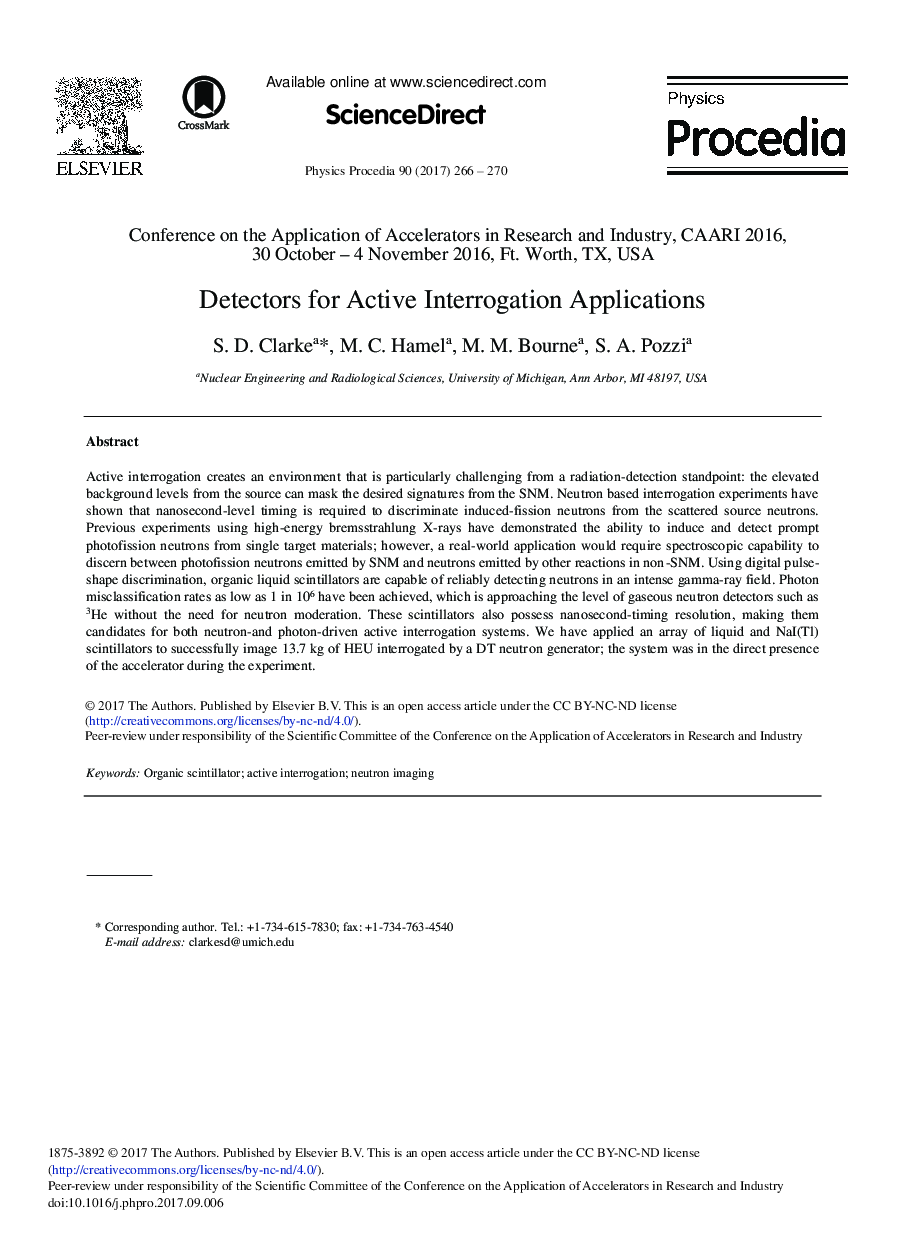| Article ID | Journal | Published Year | Pages | File Type |
|---|---|---|---|---|
| 8207627 | Physics Procedia | 2017 | 5 Pages |
Abstract
Active interrogation creates an environment that is particularly challenging from a radiation-detection standpoint: the elevated background levels from the source can mask the desired signatures from the SNM. Neutron based interrogation experiments have shown that nanosecond-level timing is required to discriminate induced-fission neutrons from the scattered source neutrons. Previous experiments using high-energy bremsstrahlung X-rays have demonstrated the ability to induce and detect prompt photofission neutrons from single target materials; however, a real-world application would require spectroscopic capability to discern between photofission neutrons emitted by SNM and neutrons emitted by other reactions in non-SNM. Using digital pulse-shape discrimination, organic liquid scintillators are capable of reliably detecting neutrons in an intense gamma-ray field. Photon misclassification rates as low as 1 in 106 have been achieved, which is approaching the level of gaseous neutron detectors such as 3He without the need for neutron moderation. These scintillators also possess nanosecond-timing resolution, making them candidates for both neutron-and photon-driven active interrogation systems. We have applied an array of liquid and NaI(Tl) scintillators to successfully image 13.7Â kg of HEU interrogated by a DT neutron generator; the system was in the direct presence of the accelerator during the experiment.
Related Topics
Physical Sciences and Engineering
Physics and Astronomy
Physics and Astronomy (General)
Authors
S.D. Clarke, M.C. Hamel, M.M. Bourne, S.A. Pozzi,
